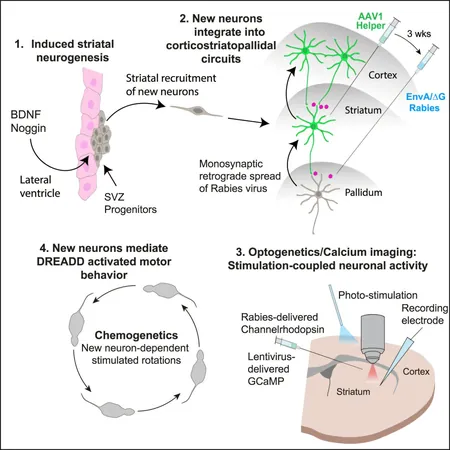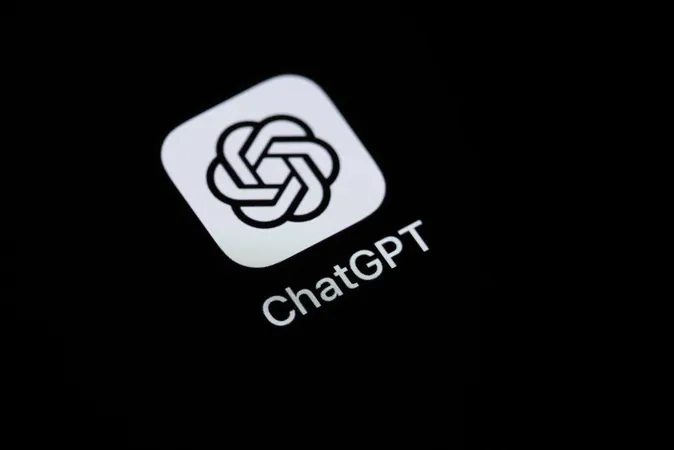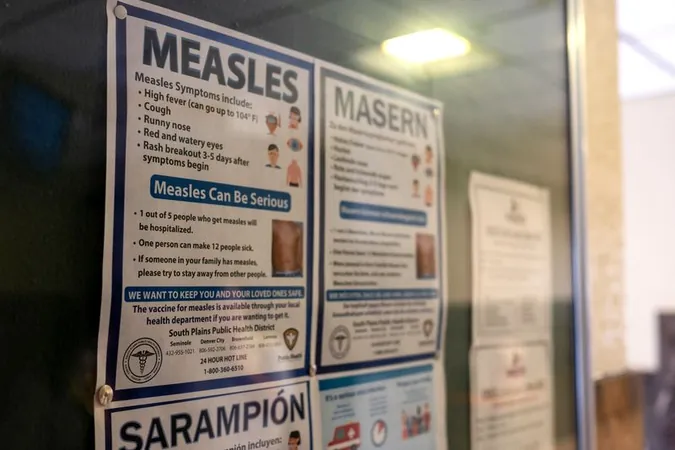
Breakthrough Discovery: Can Our Brains Heal Themselves from Huntington’s Disease?
2025-04-07
Author: Noah
Recent groundbreaking research reveals that the adult brain possesses an extraordinary ability: to generate new neurons capable of integrating into critical motor circuits. This astonishing finding paves the way for potential therapies aimed at reversing damage caused by Huntington’s disease and other neurological disorders.
Dr. Abdellatif Benraiss, a senior author of the study published in *Cell Reports*, emphasizes, “We can stimulate the brain’s own cells to sprout new neurons that can seamlessly connect to the circuits responsible for movement. This could potentially restore brain function and slow disease progression.” Dr. Benraiss works under the guidance of Dr. Steve Goldman at the University of Rochester Medical Center’s Center for Translational Neuromedicine.
Unlocking the Mystery of Neuron Regeneration
For decades, scientists believed that grown-up brains were incapable of generating new neurons. However, it is now accepted that specific niches in the brain harbor progenitor cells, which are adept at producing new neurons. These cells are crucial during early development but largely shift to generating supportive glial cells shortly after birth.
One notable area for neurogenesis is the ventricular zone, located next to the striatum—the brain region severely impacted by Huntington’s disease. The concept of adult neurogenesis was first explored in the 1980s during studies on canaries. These remarkable songbirds demonstrated how learning new songs could lead to the formation of new neurons.
The Science Behind Regeneration
Research has identified pivotal proteins, such as brain-derived neurotrophic factor (BDNF), which signal progenitor cells to differentiate and develop into new neurons. Following up on these findings, Dr. Goldman’s team showed that administering BDNF and the protein Noggin to progenitor cells in mice resulted in the development of new neurons that migrated to the striatum, transforming into medium spiny neurons—crucial cells lost in Huntington’s disease.
This recent study further clarified how effectively these newly formed medium spiny neurons can restore motor control functions. By employing innovative genetic tagging techniques, researchers traced the new cells and analyzed their integration into existing brain networks over time.
Paving the Way for Future Therapies
Utilizing a blend of advanced techniques such as electrophysiology and optogenetics, the researchers demonstrated that the newly generated neurons not only existed in the adult brain but also played a functional role in restoring motor circuits, even in models of Huntington’s disease. This discovery opens up a promising avenue for therapeutic strategies targeting Huntington’s and similar disorders characterized by significant neuron loss.
Dr. Benraiss notes, “These findings suggest that we might harness the brain's ability to regenerate and replace lost cells, thereby reinstating essential communication pathways in the brain.” Moreover, combining this regenerative approach with glial cell replacement therapies could enhance therapeutic efficacy. Previous studies in Dr. Goldman’s lab indicated that replacing dysfunctional astrocytes with healthy ones could mitigate disease progression and improve neuronal function.
As these glial replacement therapies advance into preclinical development, they represent a beacon of hope for Huntington’s disease patients, illustrating that advancements in neuroscience could lead to revolutionary treatments that not only manage symptoms but also encourage recovery and neuron restoration.
Stay tuned for more updates on this promising research that could redefine the future of Huntington’s disease therapies and potentially transform our understanding of brain resilience!









 Brasil (PT)
Brasil (PT)
 Canada (EN)
Canada (EN)
 Chile (ES)
Chile (ES)
 Česko (CS)
Česko (CS)
 대한민국 (KO)
대한민국 (KO)
 España (ES)
España (ES)
 France (FR)
France (FR)
 Hong Kong (EN)
Hong Kong (EN)
 Italia (IT)
Italia (IT)
 日本 (JA)
日本 (JA)
 Magyarország (HU)
Magyarország (HU)
 Norge (NO)
Norge (NO)
 Polska (PL)
Polska (PL)
 Schweiz (DE)
Schweiz (DE)
 Singapore (EN)
Singapore (EN)
 Sverige (SV)
Sverige (SV)
 Suomi (FI)
Suomi (FI)
 Türkiye (TR)
Türkiye (TR)
 الإمارات العربية المتحدة (AR)
الإمارات العربية المتحدة (AR)